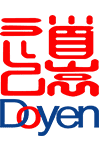

Tel:
+86-757-8633-0278
Email:doyen@doyenchina.com
Fax:+86-757-86287390
Address:Room 201, Building No. 24, Yicui Rose Garden, No. 2, Jihua 7 Road, Chancheng District, Foshan City, Guangdong Province, China 528000.
Filter press is the key equipment of this project. After repeated investigations and comparisons, the main advantage of domestic equipment is low price. The cost of using domestic filter press (only the equipment price) is about 1/of the cost of Finnish LAROX PF filter press 3. It can reduce the construction investment of the whole project. However, in terms of the quality of the product’s alkali residue, the equipment’s filtering ability, the degree of automation, reliability, stability, floor space, labor force, etc., the PF filter press is better than the domestic filtration equipment. Therefore, two Finnish LAROX PF filter presses were selected for this project. The main parameters are as follows:
Model: Larox PF 144 B5 45
Filter area, m2 144
Filter plate, block 24.
Main engine power, kW 110.
Structure: The filter unit of the PF filter press is placed horizontally in two pressure plate frames. The plate and frame components are squeezed together during filtration, and the filter cake is automatically opened when the filter cake is discharged.

Control: The control system of the PF filter press has a high degree of automation. The filter press uses a PLC control cabinet with a touch screen. The entire production process: feed → filtration → diaphragm → Ⅰ extrusion → filter cake washing → diaphragm Ⅱ extrusion → Air drying → filter cake discharge → filter cloth cleaning, all are automatically completed. The feed pump, washing pump and the adjustment of the air volume for drying and extrusion in the system are all controlled by the master control cabinet. The use of touch screen can adjust the time ratio of the operation process at any time according to the actual production situation, effectively ensuring the stable and continuous operation of the entire production process.
2.2. Clarification bucket.
The waste liquid clarification tank is one of the key equipment of this project. Its function is to clarify the ammonia alkali waste liquid (solid content is about 3%). The turbidity and pH value of the waste liquid on the upper part of the clarification tank can be directly discharged Discharging the sea, while increasing the solid content of the underflow mud to 7%~10% (weight ratio), the waste liquid is thickened and then filtered by the filter press, which can increase the production capacity of the filter press and reduce operating costs. This project is designed with 2 clarification tanks of φ26 000/φ21 000×13 000.
2.3. Carbonization tower.
The carbonization tower is one of the necessary equipment in this project. Its function is to adjust the ammonia distilled waste liquid with a pH value of about 11 to about 7 to ensure that the clarified waste liquid meets the environmental protection emission requirements. And the calcium hydroxide is turned into calcium carbonate, the particles become coarser, and the filtration rate is improved.
The overall size of the waste liquid carbonization tower is φ2 600×20 000, the base material of the tower is cast iron, and the tower body is made of carbon steel. There are 6 sieve plates in the tower every 2 200-3 000 mm. The working pressure is normal pressure.

3. Trial operation situation.
The filter press unit was successfully commissioned on September 26, 2003. After a period of trial operation, the main indicators have reached the design requirements, and the parameters are as follows:
Clarification bucket bottom fluid solid content (weight ratio), % 10
Filter press operating cycle, min/cycle 18.5~20
Filter press parameter setting, s
feed 500.
squeeze 300~350.
Dry 80~100.
Discharging, cleaning, etc. 230~250.
The amount of filter cake processed, t 4.07~3.83.
Filter cake thickness, mm 35~30.
The water content of the filter cake is 46~38.
During the production process of ammonia-soda soda ash, a large amount of waste liquid is discharged, which belongs to the third type of industrial waste. The discharge volume is about 9-11 m3/t of alkali, and the solid content is about 3% to 5% (weight ratio). Although ammonia alkali waste liquid is not toxic, it has the characteristics of large discharge, high alkalinity, excessive solid content, and difficult separation. Reducing emissions costs and achieving harmless emissions have always been a worldwide problem in the production of soda by ammonia-soda method. Lianyungang Soda Plant is an ammonia-soda soda plant built during the “Seventh Five-Year Plan” period. The original designed soda ash production capacity is 600 kt/a, and the current production capacity has reached 920 kt/a. Since it was completed and put into operation in 1989, the slag field used for the discharge of waste liquid and slag covers an area of 1.7 million m2. In order to save land resources and further explore new ideas for environmental protection, in 2003, as the first phase of the project, our factory introduced 2 PF144 B5 45 automatic filter presses produced by Finnish LAROX company to implement filter press treatment for part of the waste liquid.
Doyen specializes in providing belt press equipment for the Southeast Asian market. Welcome to visit our workshop, according to the actual situation of your company, develop a more scientific dehydration program.Welcome to joyce@doyenchina.com or visit https://www.doyenchina.com.
Jan-05-2021
admin

 +86-757-8633-0278
+86-757-8633-0278 doyen@doyenchina.com
doyen@doyenchina.com Sitemap
Sitemap